
What’s going on out on the land?
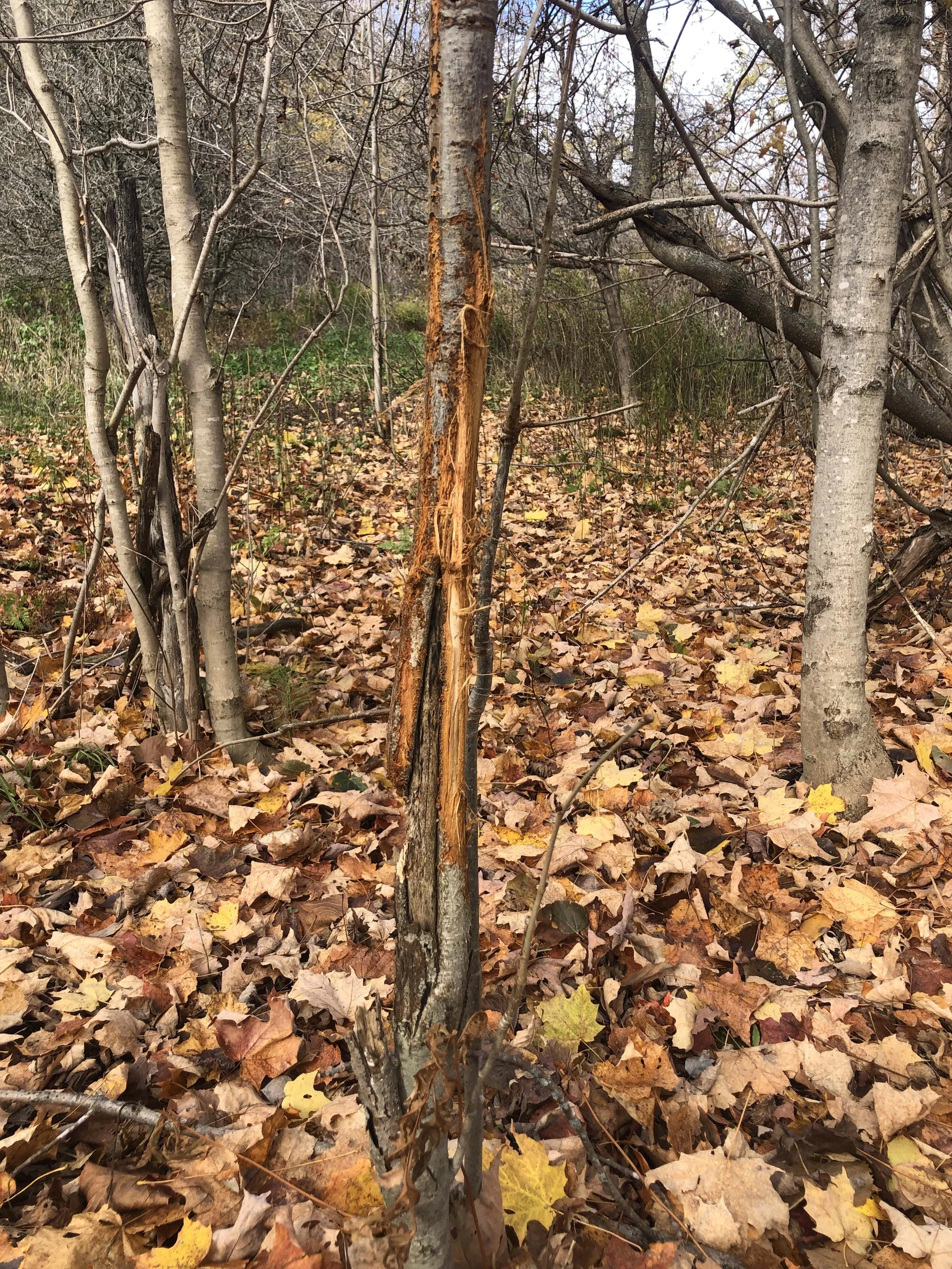
Signs of the White-tailed Deer Rut
While tracking White-tailed Deer at Mono Cliffs with the Earth Tracks apprenticeship, we saw lots of signs of the rut and the subtle ways deer communicate. We studied three main signs: scrapes, rubs and lick branches. Together, these clues form a multisensory language of scent, sight, and even ultraviolet signals that share details of identity, territory, and mating readiness. These clues along the trail are a real insight into how deer express themselves across the landscape in ways most of us overlook.

Determining Direction of Travel on a Fisher Trail
“Which way them critters goin’?”
To this day it can be tricky to tell the direction of travel through deep snow.
For this exploration in determining the direction of travel I’ll use a snowed in Fisher trail we encountered during an Earth Tracks Tracking Apprenticeship outing at Bognor Marsh, near Meaford, Ontario as an example. It was a faint trail, mostly snowed in, but the impressions were visible at the right angles, as long as they hadn’t been blown away in the wind.
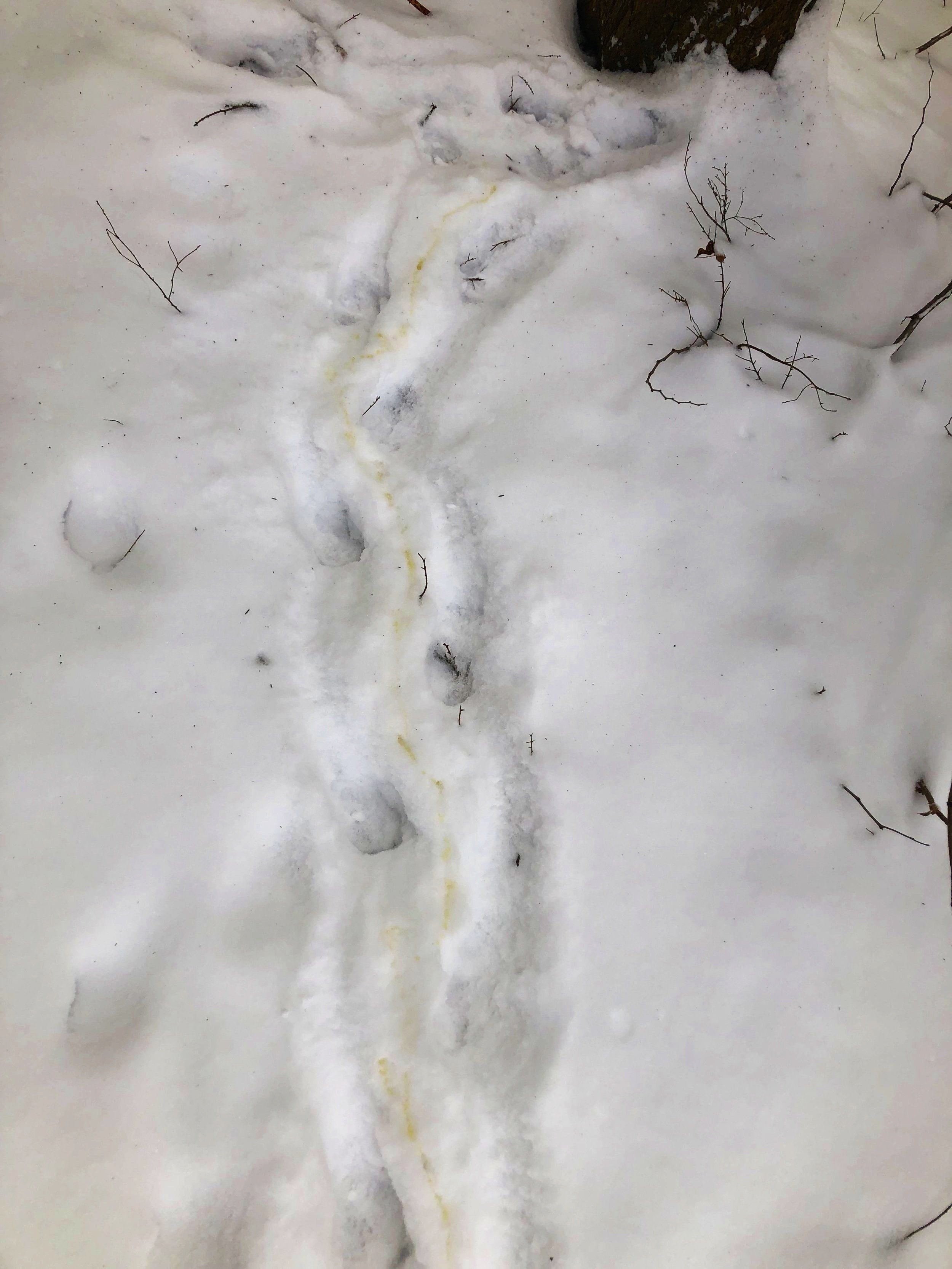
Trailing Porcupine at Dunby rd
I knew who the trail belonged to pretty much right away due to the oscillating midline that ran through the length of the furrowed trough in the snow and the occasional spotting of urine that was sprinkled intermittently along the run. This was the trail of the North American Porcupine, a common fixture in the forests of Dunby rd.

A Story Of Stones At Old Baldy
I recognize that these are epic cataclysmic histories, but the stories held in the stones at Old Baldy have brought about a deep sense of peace for me when it seems so lacking in the world right now. Maybe it’s the disconnect of me not being present for the upheaval and torrent of glacial meltwaters and crushing sheets of ice, but doing the research, piecing together clues, and imagining the magnitude does create a profound sense of wonder and awe, a stupefying amazement in the unveiling of a billion years of mystery written on the body of the hill. I deeply appreciate the work and practice of listening to the stones and tracking the beauty of the land.

Tracking at Saugeen Shores, 2024.09.28
Another beautiful, exciting and overwhelming trip with the tracking apprenticeship to Saugeen Shores. Bird tracks, invert sign, reptiles, and more met us on the sandy shores of Lake Huron.

Invert Sign at Dunby Rd.
Learning more about invertebrates and the signs they leave behind is such a valuable part of wildlife tracking to me. I feel like when I teach or share about the inverts, most people are kind of “cool, but where are the mammals?” about it, but I hope to keep learning more so that I can inspire some deeper respect and awe about a couple whole other phylums! There is so much life out there, that doesn’t look like us, move like us, eat, excrete, breed or breathe like us and every time I learn something new I get stoked. I am grateful to get to share some of that excitement in this post.
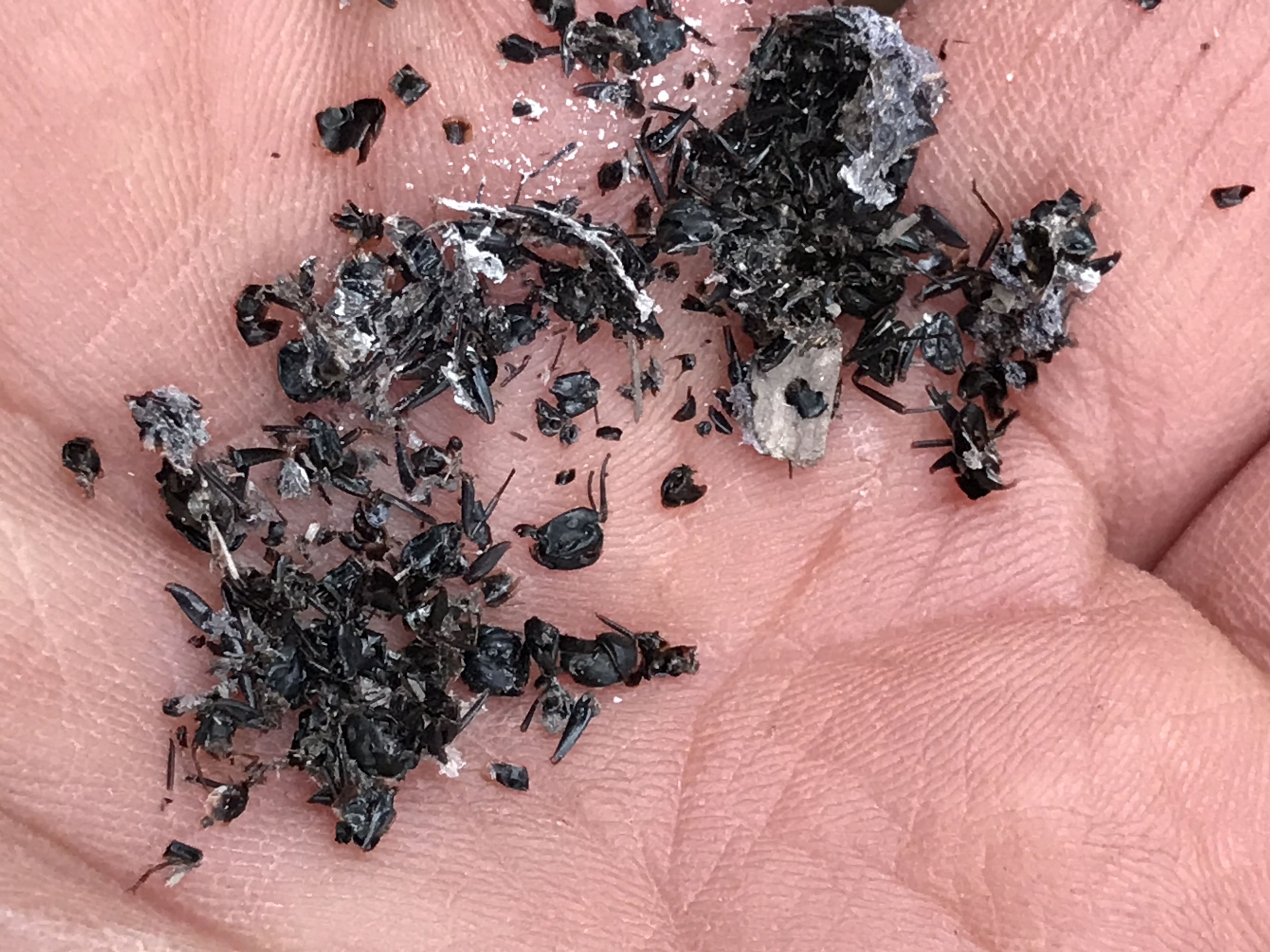
Deeper Questions of Common Sign : Tracking at Kinghurst
This past Saturday was another outing with the Earth Tracks Wildlife Tracking Apprenticeship. We went out to the Kinghurst forest in Grey County, Ontario to see what we could find together. It was a small group of six of us, but that made it a little bit sweeter as we could really dig in to all of the things we were seeing.

Sign of Birds in Algonquin Park
While in Algonquin Park this past week with the Earth Tracks Winter Wildlife Tracking Trip I tried to pay more attention to some of the bird sign throughout our days, though I didn’t always get some good photos, and I missed recording some beautiful songs and calls. I will share however what I did find in the park and what I have been able to learn thus far.
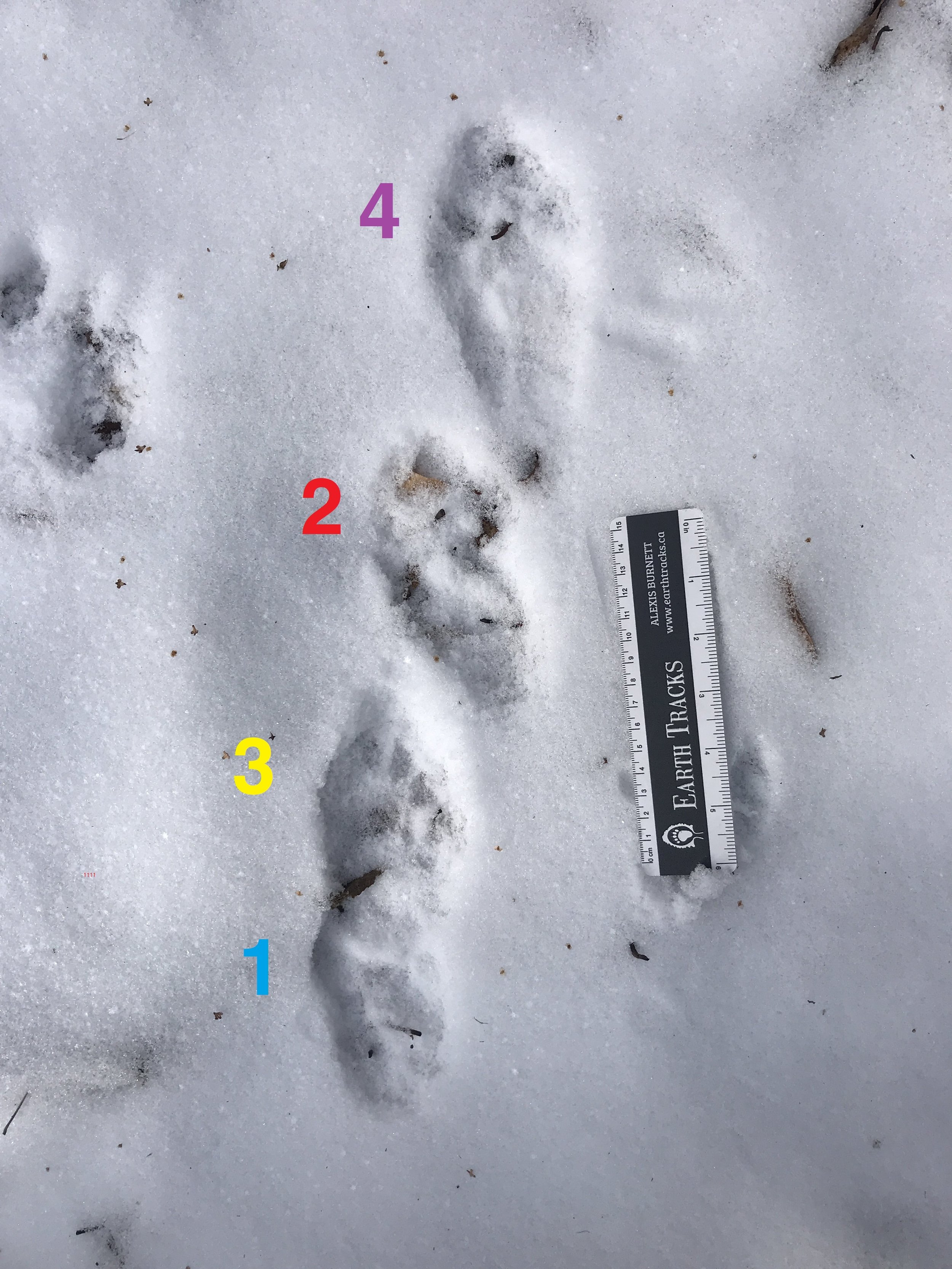
Trailing a Fisher at Old Baldy
We had just crossed over from the thick White Cedar forest into a little more spacious deciduous forest, when, in a very unassuming tone, a friend called us over to check out some tracks. I don’t know if he realized at first how cool the trail he had just found was, but as we stepped off of the path and looked down at the tracks everyone leaned in a little closer, and our voices started to ring with a little more excitement. Our colleague had found a Fisher trail.

Wolf Trees, Stink Horns and Carrion Beetles
As I looked down at the leaf litter, I noticed quick movement and a small flash of orange and my heart began to sing. My hand shot so fast into the gooey death stenched Cedar leaves faster than anyone could see. Before anyone registered what I had done I was cradling a critter in my closed palm and I felt them defecate their lunch of corpse into my palm. Again kids, never do as I do.
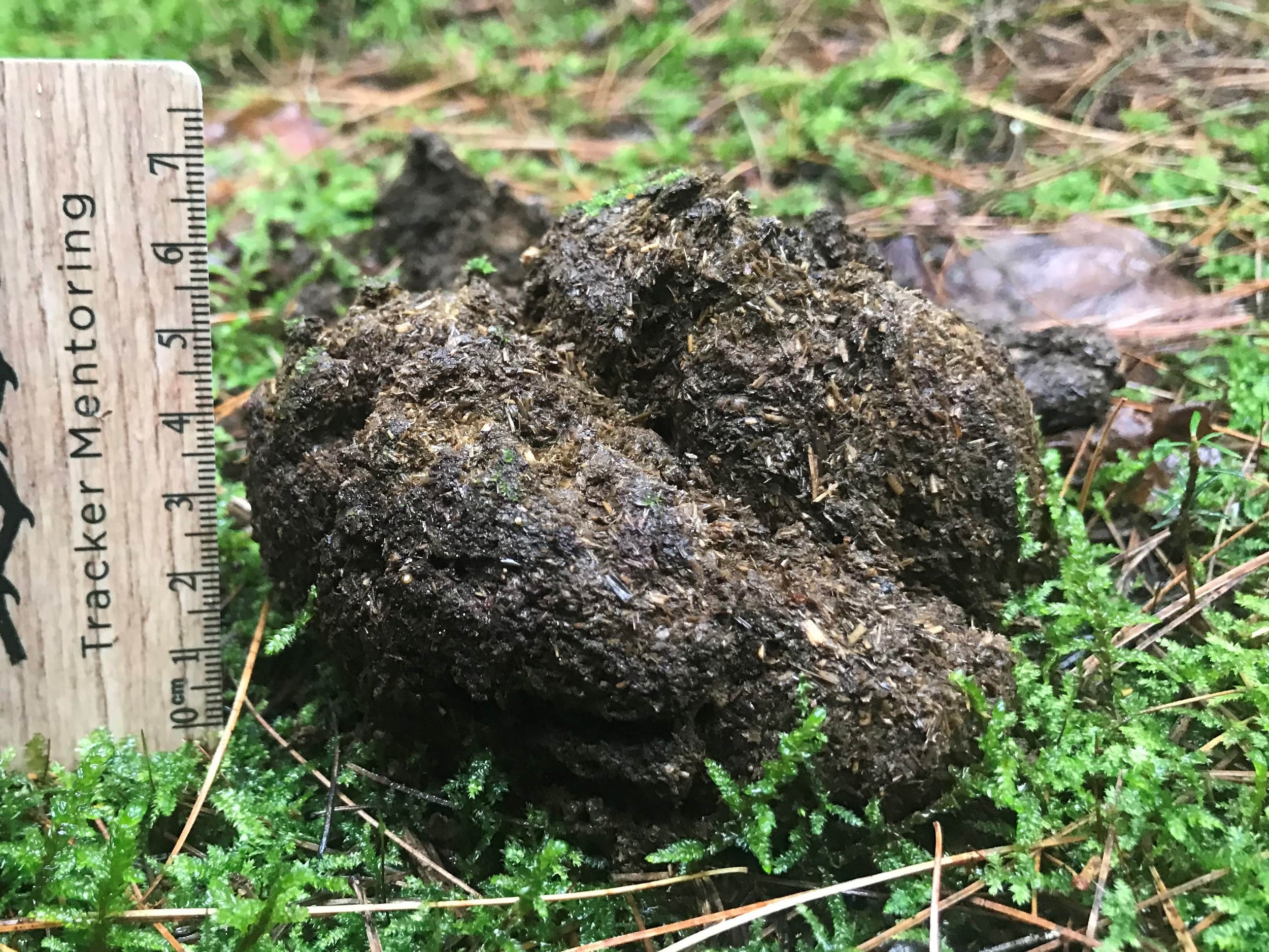
Towards A Better Understanding of Scat
Ok, so the title might be a bit provocative, but it is the best I have come up with the truly explain what I am getting at. Recently, while the tracking apprenticeship was staying at the Wildlife Research Station in Algonquin Park, we encountered some scat from a few different mammals. The questions kept coming as to the contents, the diets, and the bodies which formed and shaped the scat. I want to explore some mammalian scat a little bit more with this blog post and try and understand what clues the poop might hold to the different physiologies of a few of the species whose scat we encountered.
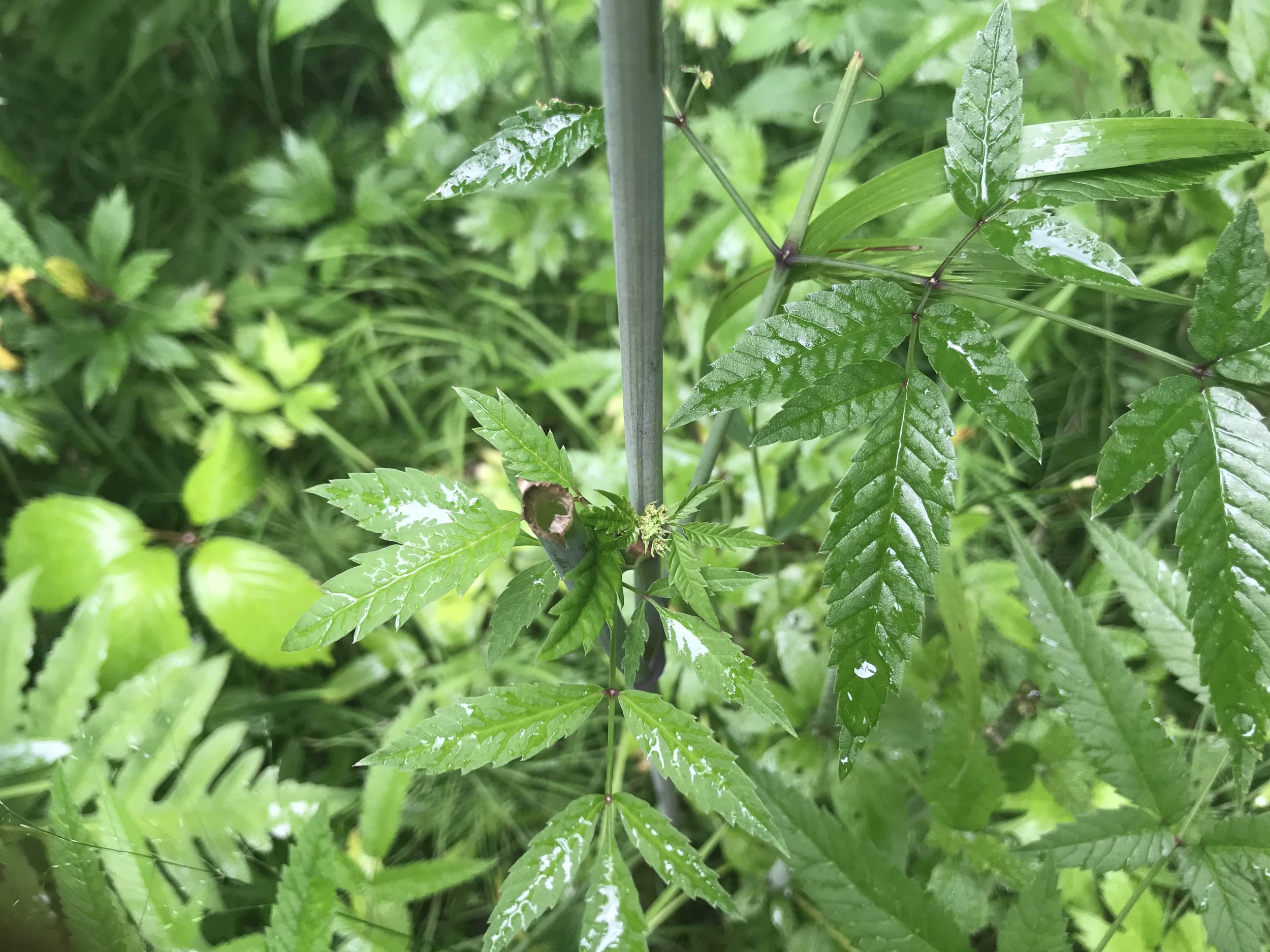
White-tailed Deer consuming Water Hemlock
White-tailed Deer consume a lot of different things. It seems everytime I see some Deer browse, it appears to be a new forb, shrub, or tree which I hadn’t seen a Deer browse before. I wanted to look into the foods which Deer browse more generally, but also focus on a new discovery of Deer browse on the aerial parts of Water Hemlock.
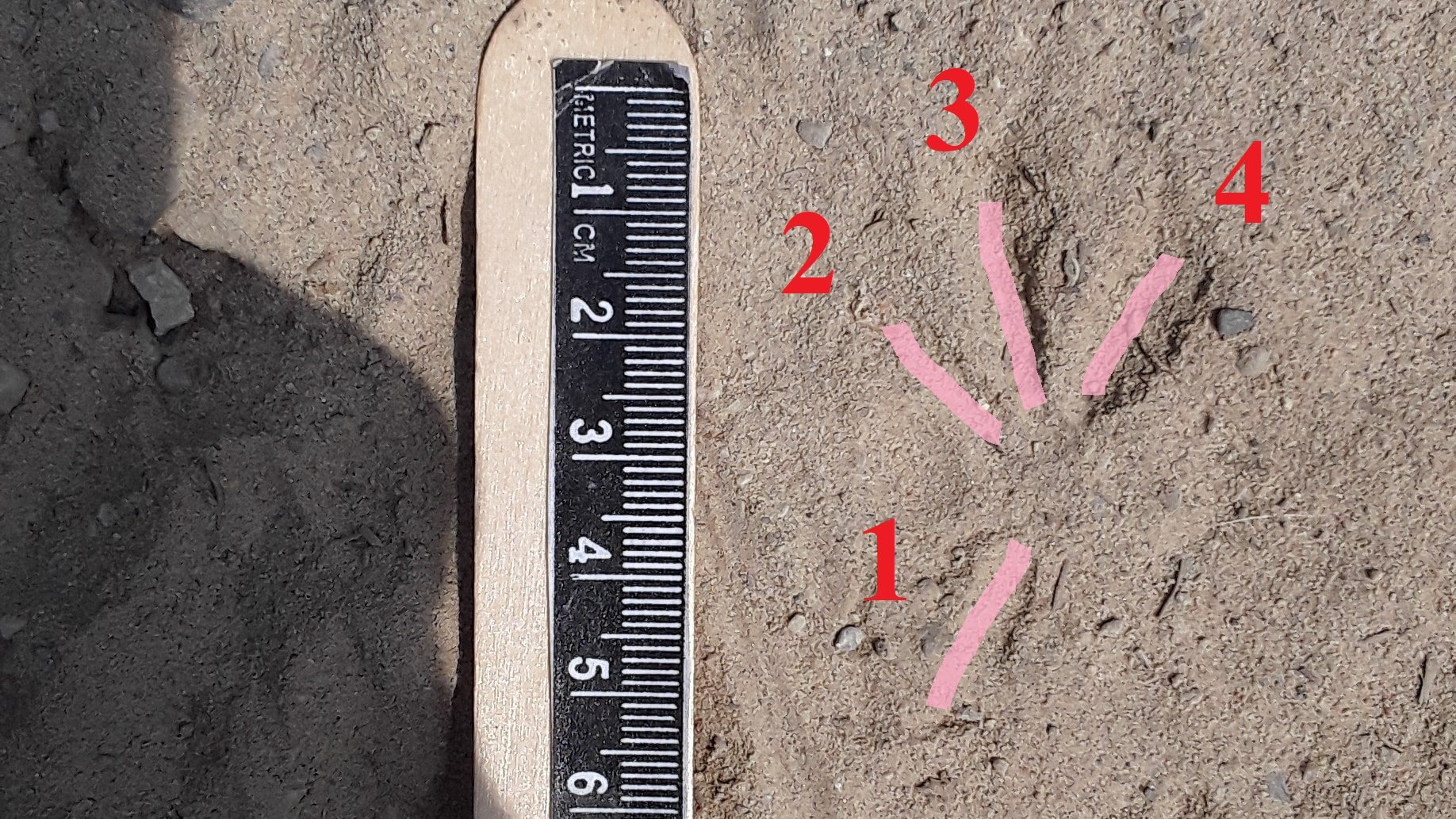
Tracking Birds At Saugeen First Nations, 2023.06.10
We parked and got out of the vehicles after a long drive and took to the sand right away to find some good tracks. While we did discuss some Red Fox and some Coyote tracks and gait patterns, I was really looking forward to finding some bird tracks. I was eager for the beach but James called me over to show me a track he’d found. It was from a bird! This was a great start to our day together as I came with the intention of tracking birds and we were only about four metres away from the cars. We got down to check it out.
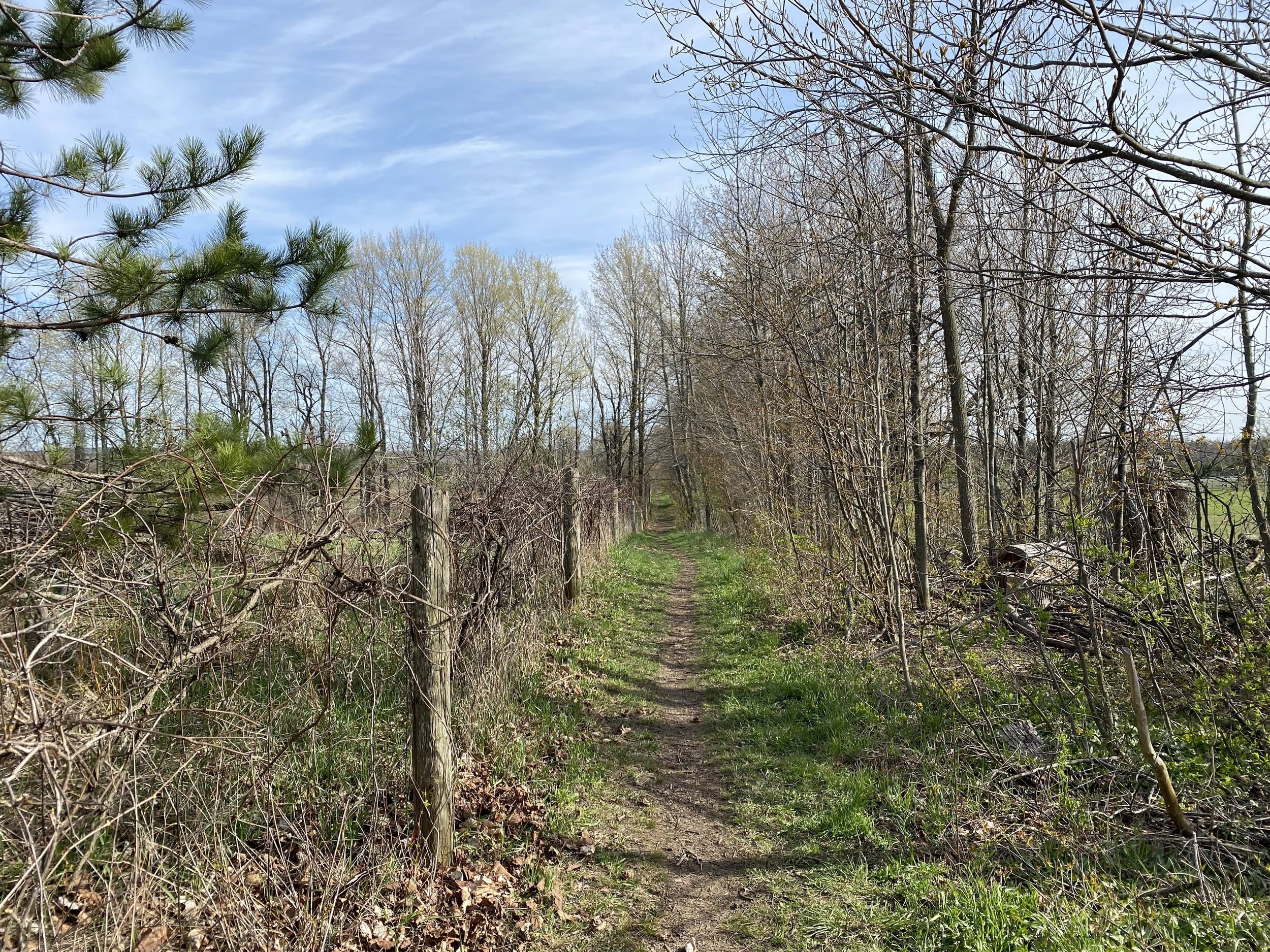
The Spring Birds of Dunby Rd
For our first day of the 2023-2024 Earthtracks Wildlife Tracking Apprenticeship we all gathered at Dunby rd to explore the tracks and sign of wildlife along, and adjacent to, the Bruce Trail. While we encountered much more than birds, I wanted to write a bit of a report back on some of the sign of the birds along the trail as I am trying to focus on learning more about bird track and sign this year. This includes feathers, nests, eggs, scat, pellets, dust baths, kill sites, tracks, feeding sign, etc., etc. For this outing it all started with song.
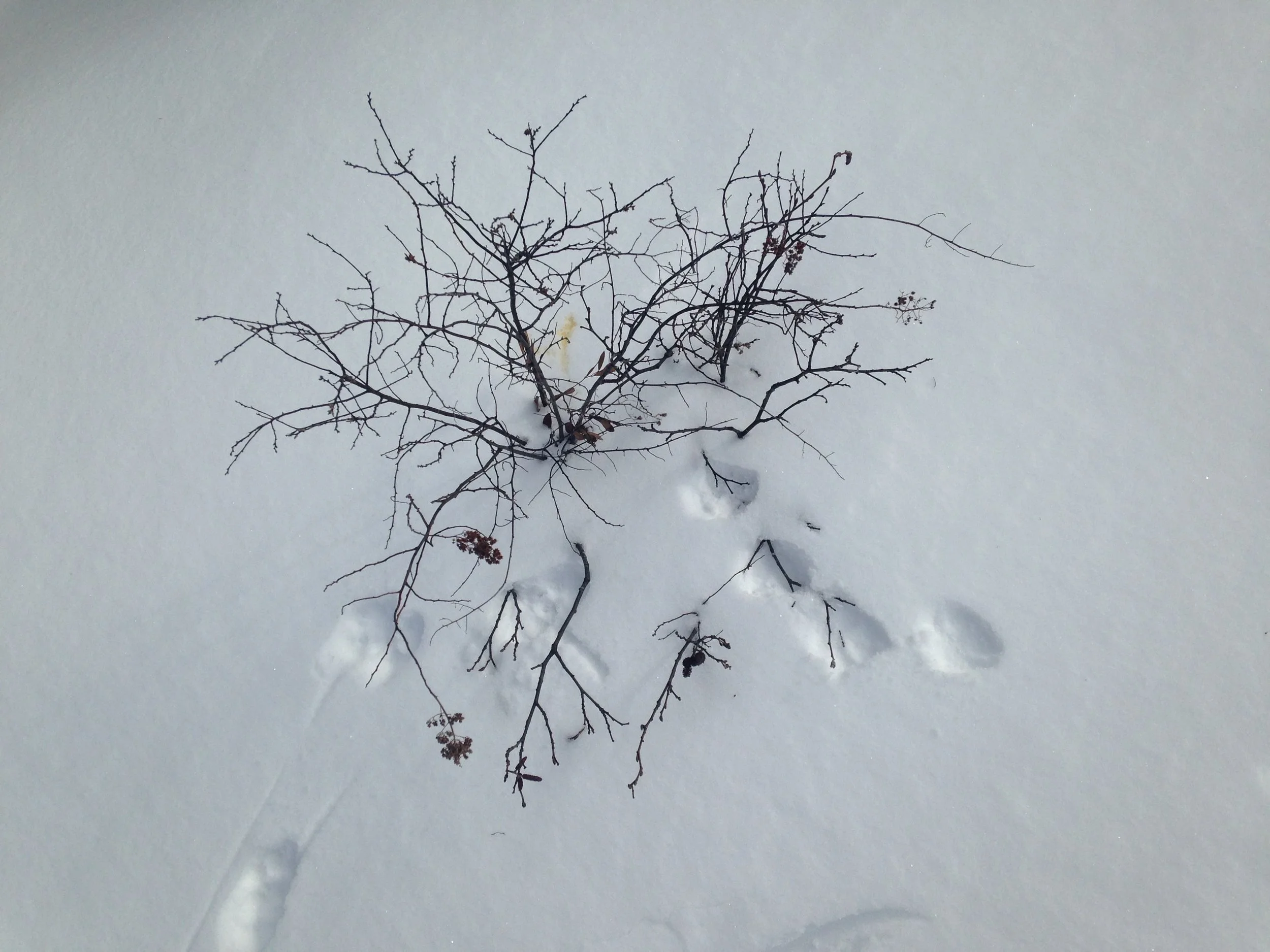
Are There Dangers In Smelling Red Fox Urine?
Recently, while trailing in Algonquin Park with the Earth Tracks Wildlife Tracking Apprenticeship some of us bent down on different occasions to smell Algonquin Wolf, Red Fox, and River Otter scent marks, which were usually small deposits of urine placed in a prominent spot along the animal’s trail. When we got back to the Wildlife Research Station which was our home base for the weekend, we got to talking about safety around sniffing animal urine when trailing.
Personally, I have smelled animal urine literally hundreds of times. Nearly every time I see a urine deposit on an animal trail, aside from Human (Homo sapiens) and other domestic animals, I get down and sniff. But the questions got me reflecting; When tracking or trailing an animal, are there dangers in smelling animal urine?

Examining Coyote Courting Behaviours : Tracking at Bell’s Lake
On Saturday we met up to go tracking with the apprenticeship crew. Marcus and I pulled up I noted the trail along the middle of the road, between the tire tracks, where it looked like some sort of canid had been walking along. The folks who were already there had already noticed this trail and were exploring other trails as well. As everyone arrived we circled up and then decided to follow the trail into the woods and see what else we could figure out.
What began as a wonder, ended as a joyful celebration of the possibility of romance and new life. All from following a couple of Coyotes.
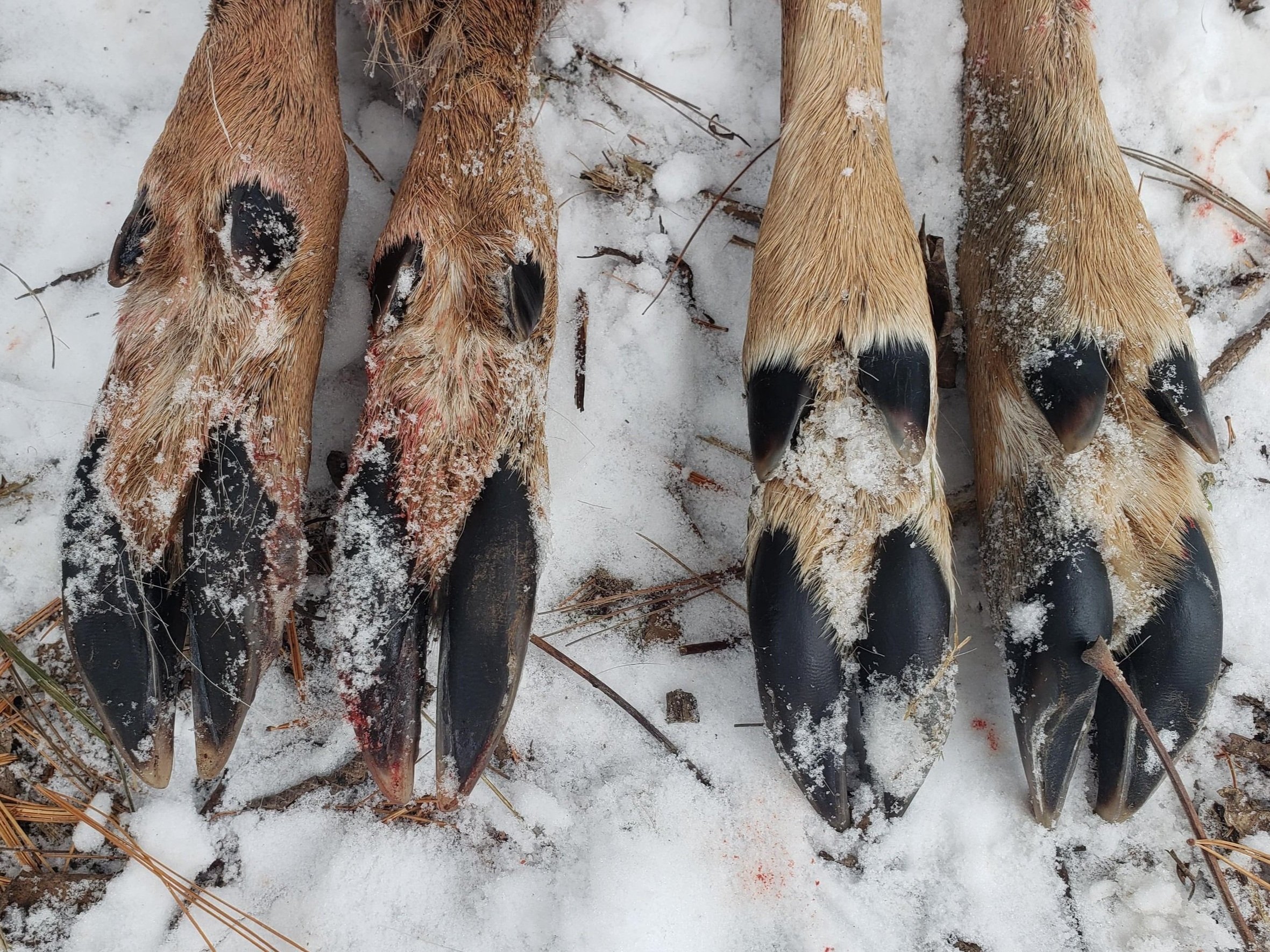
What The Toes Show - A question of deer hooves
For the past four years there has been a bit of a conundrum at the tracking apprenticeship. There has been a theory passed around to be argued and analyzed, challenged and sustained. It has confronted, confused, and confounded many of us who have tried to scry a little more understanding from a couple of seemingly basic teachings, all from the hooves of White-tailed Deer.
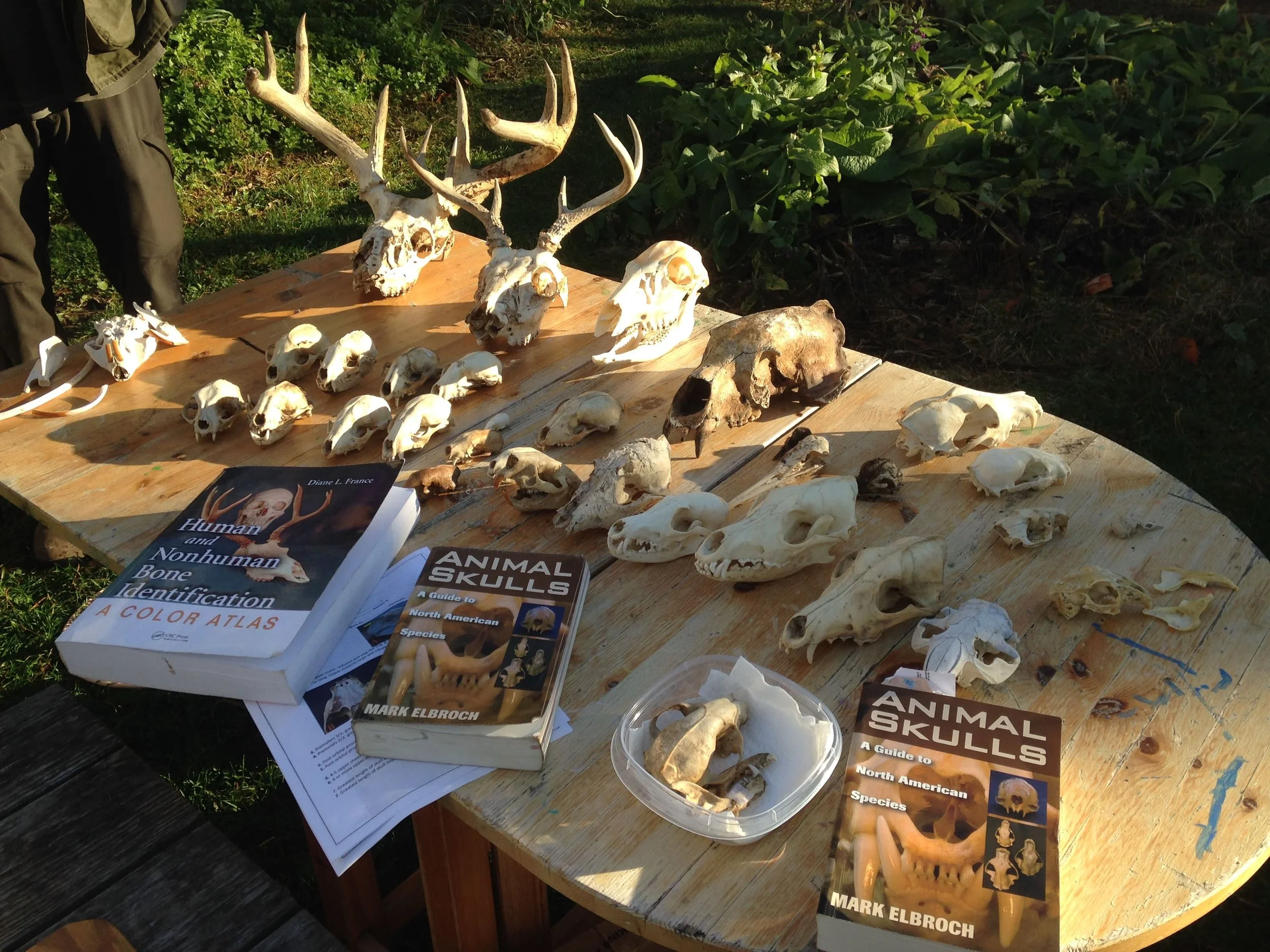
How To Clean A Skull
This past weekend with the EarthTracks Wildlife Tracking Apprenticeship I got to host a mini-workshop all about skulls. It was a chance to share some of my enthusiasm about the wonderful ecologies of a boney structure which hold, protect, support and enables our lives. Why not be in love with skulls?
One thing I wished I could have touched on more clearly and more eloquently for everyone was how to clean a skull, which is a question that comes up every time I bring out skulls in any of my programs. So in light of that questions, I decided to explain some of how I clean the skulls I find.

Follow The Food
Knowing the plants who are in relationship with the animals we track can help us find the animals we want to learn about. They can point in the direction of where the animals are going or where they will be going. They can show us if we are in the right environment or if we need to keep looking.
This entry is pretty much a story of a recent afternoon spent tracking in the Lake of Bays region, just South West of Algonquin Park, where we spent a few hours following the food and then finding the animal.

Ruffed Grouse Questions from 2022.01.15
Ruffed Grouse were all around us in the forest when we arrived. Many were heard, some were seen, but even more so, their tracks littered the forest floor. There were these sunken oval impressions generally in the shape of a Grouse body pressed into the snow. We put our hands in despite the -20°C temperatures and felt the bottom the impressions. There was a hard icy crust in some of them, but not in others. There was scat in a couple, but not all. All had long chains of tracks emerging from them, but none had discernable tracks leading to them. What was going on?
